This article explores how domain and content modelling can be used to structure complex, abstract topics like aesthetics in a CMS. It highlights their relevance for improving clarity, consistency, and flexibility in digital content strategy.
As part of my Master's degree in Content Strategy at FH Joanneum, I took the course "Introduction to Content Management" with Ben Croker, where the task was to develop a content model for Craft CMS that could serve as the basis for, say, a recipe database or a dog encyclopaedia.
For my project, I chose a more abstract topic: aesthetics. This article explains how I approached domain and content modelling in that context—and why this topic matters.
But why Aesthetics?
Aesthetics are crucial for creating a coherent visual style—particularly when working with text-to-image AI models. They also help us understand audience preferences and emotional resonance [source]. That makes them highly relevant for anyone working in visual content strategy.
What is Domain Modelling? #
Although the term "domain" might make some think of internet domains, domain modelling has nothing to do with the number of top-level domains on a website. Instead, it refers to mapping out the key entities, attributes, and relationships in a given subject area—independent of technology. [source]
Purpose and Benefits
The primary goal of domain modelling is to develop a deep understanding of the subject matter and the needs of users. This aids in designing a system that efficiently handles data—for instance, by avoiding duplicate records and supporting the ways users typically search and interact. [source]
Process and Implementation
At this early stage of system development, no technology is required. It is a technology-independent phase that allows for thinking free from later implementation constraints.
Connection to Content Models
A well-thought-out domain model significantly eases the subsequent creation of content models. By clearly defining the entities and their relationships, content can be more effectively organized and managed, reducing the number of necessary corrections during the implementation phase.
Application in Front-End Development
Domain modelling also plays a crucial role in the development of user interfaces. All user interfaces, actions, interactions, and presentations have a strong foundation in domain modelling, as it helps developers understand how end-users will utilize the system. [source]
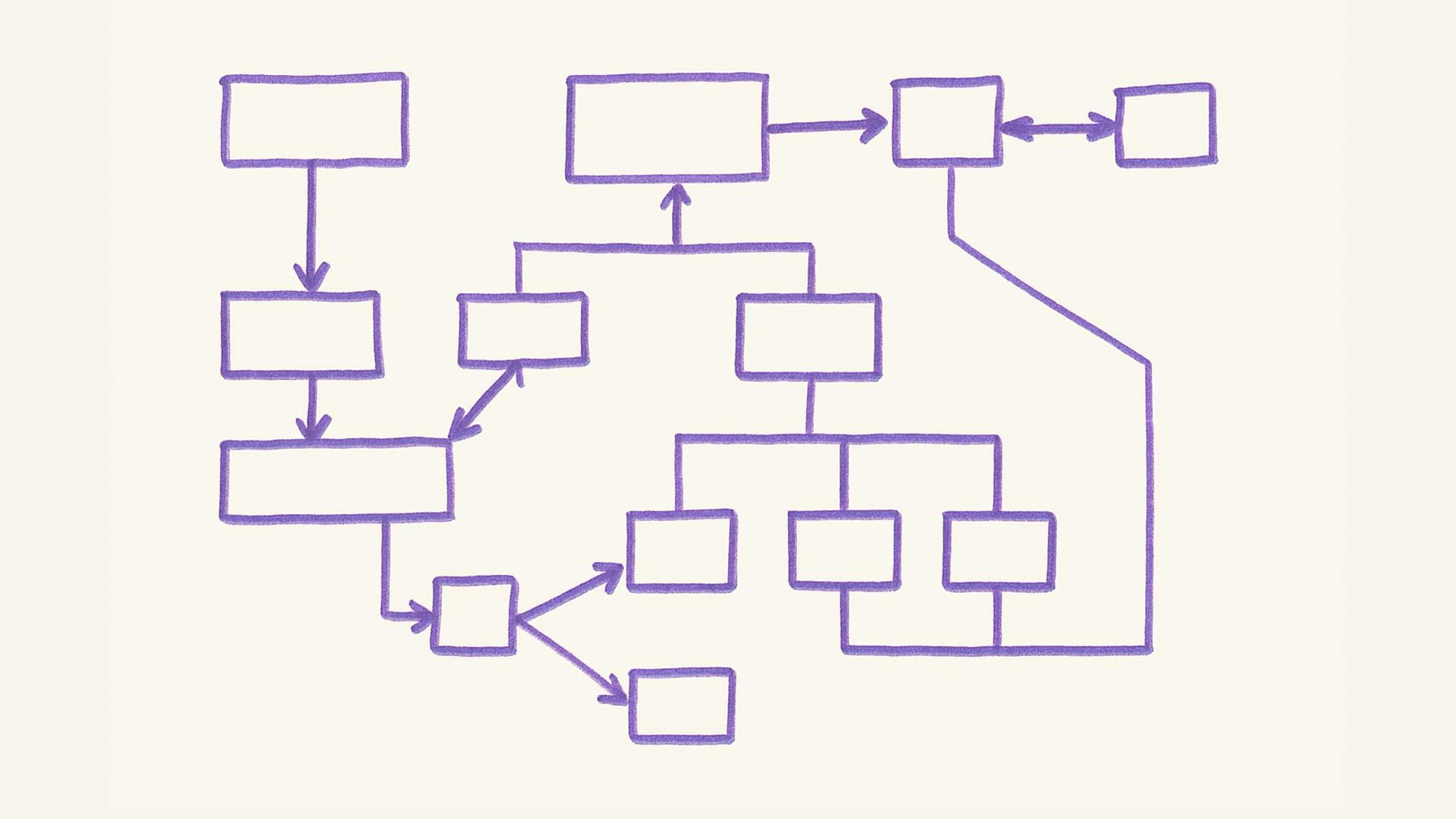
What is Content Modelling? #
Content modelling represents the practical application of the previously described concept and requires the use of appropriate technology. [source] In my project, Craft CMS was utilized with the goal of establishing a standardized structure for entries on the topic of aesthetics. This allows content to be consistently and efficiently integrated into the system.

Standardization of Entries in a Corporate Context
This means that every employee who writes a blog post in a company, for example, must fill out the exact same template. To facilitate this, it must be determined in advance which fields need to be filled out. [source]
Definition of Fields and User Support
This process involved defining fields such as "Title," "Short Description," and the ability for users to upload images. Ben Croker emphasized in his teaching the importance of people receiving information exactly when they need it. Therefore, it is essential that these fields contain clear indications, for example regarding the maximum length of a short description or a link where users can download templates for image formats. This support is crucial to facilitate the standardized process and ensure efficient workflows.
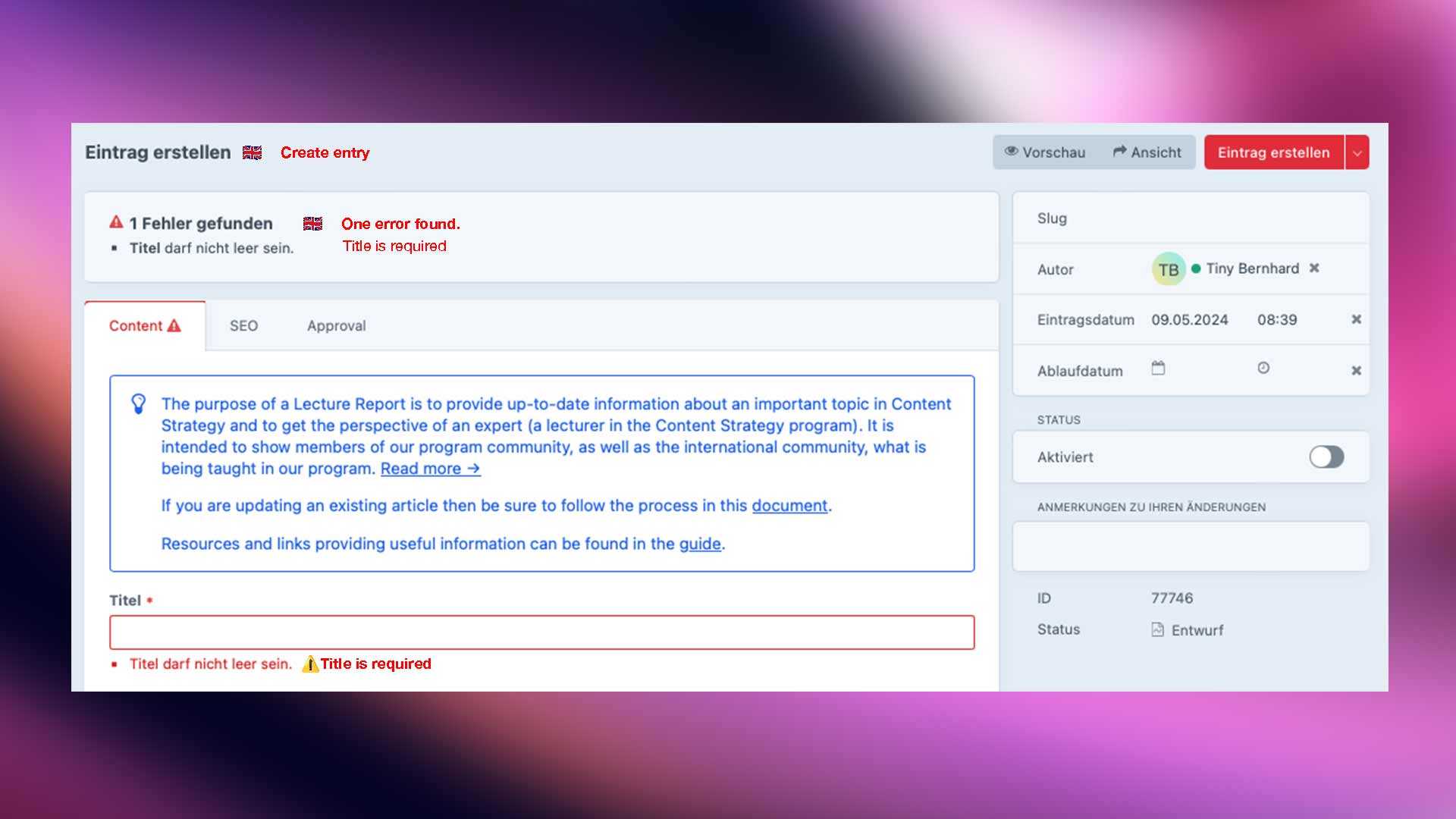
Practical Example
Here is an example from a less complex entry, for instance on dog breeds: As you can see, certain areas need to be individually filled out, while others simply allow the selection of existing data. This demonstrates the flexibility and structure achieved through content modelling.

Choosing Aesthetics as the Basis for My Content Model #
After explaining what domain modelling and content modelling are, I would like to discuss why I chose the topic of "Aesthetics." Aesthetics provide a solid foundation for embedding a company's communication within a world already familiar to the audience.
In the fast-paced world of advertising, we do not have the time to develop new concepts but must connect with emotional worlds to effectively reach consumers. Instead of creating a new world, we rely on mental models that are already established among the target audience. [source]
Decision Making Examples in Content Model Aesthetics #
In this section, I will explore complex decision-making processes using examples from my project on content model aesthetics. Each discussion will highlight how strategic choices in audience targeting, sorting, color schemes, and translation accuracy can significantly influence the effectiveness of a content model.
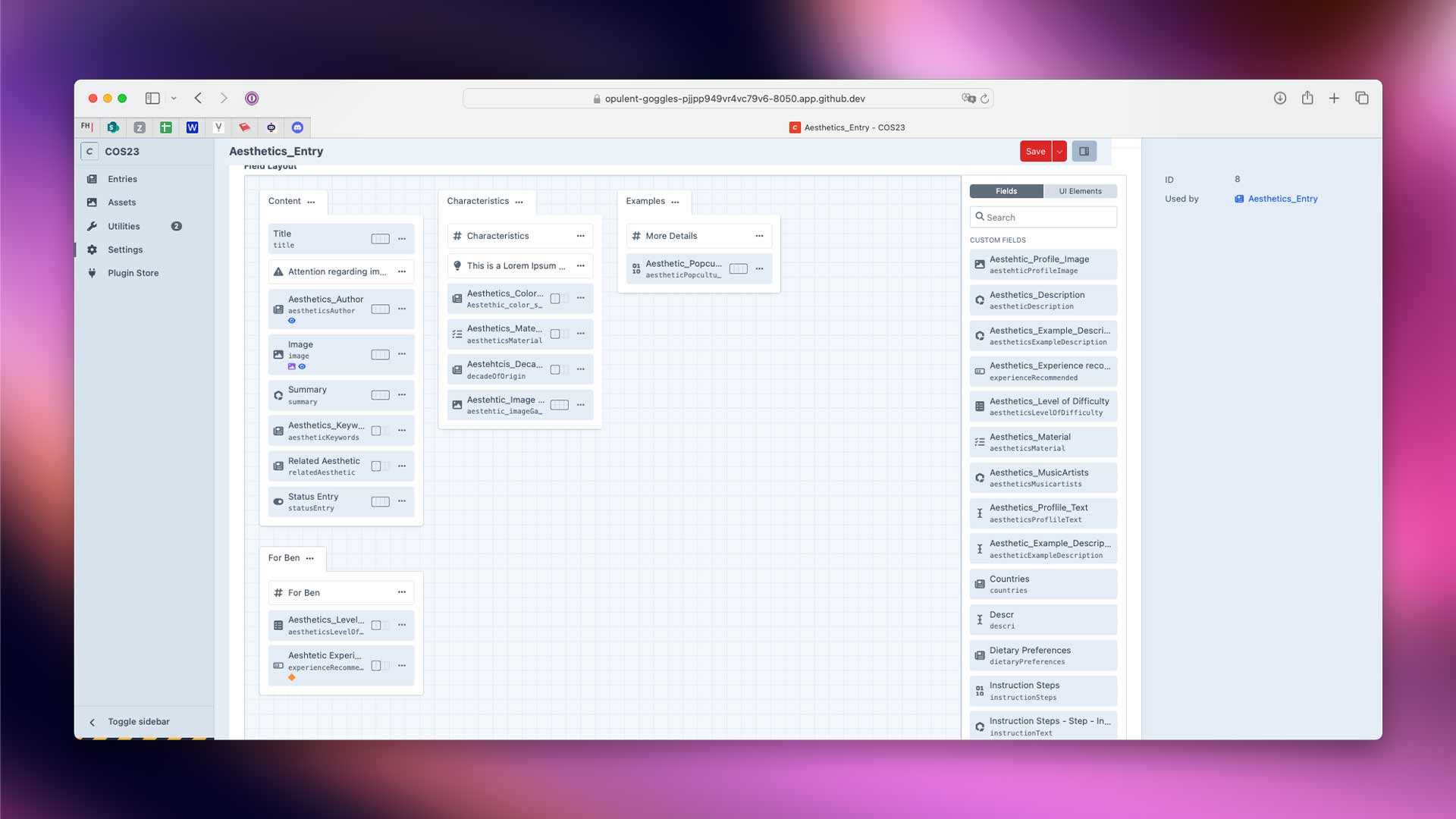
Navigating the Challenges of Choosing the Target Audience
Initially, I investigated how aesthetics are presented on the internet, for example on platforms like Wikipedia. It's crucial to thoroughly research and reflect before designing a content model, considering who it is being created for and who could benefit from the researched content. This research aids in precisely tailoring the content model to the needs and prior knowledge of the target audience.
Navigating the Challenges of Sorting and Searching
A key element of the content model is the ability to sort content by various criteria such as title, decade of creation, and characteristic color schemes. This structuring assists in organizing and searching for content.
For example, companies can target their research when planning a campaign that aims to evoke the nostalgia of the 90s. They can do this by reviving products and styles that were particularly popular among millennials. [source] [source]

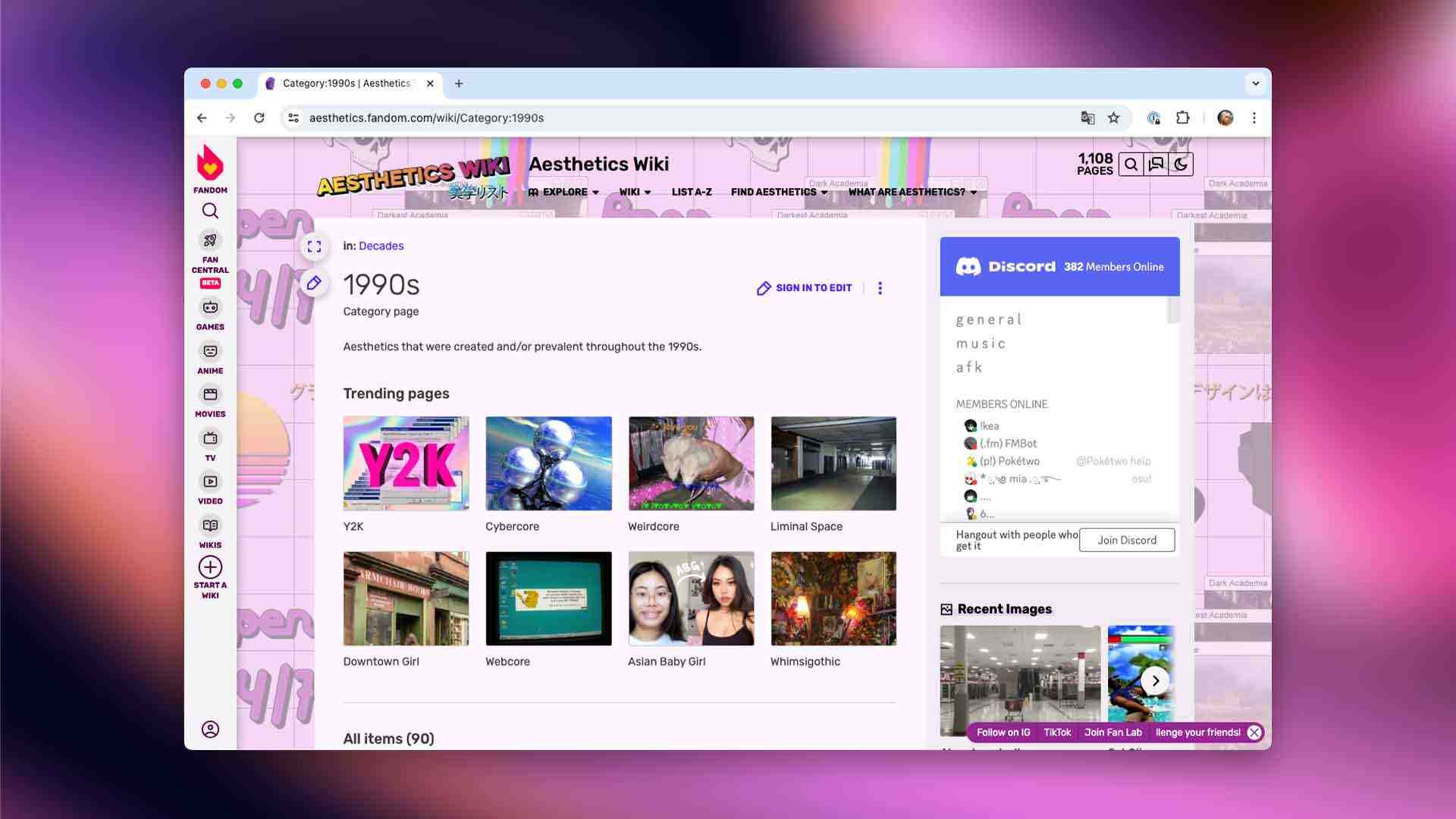
Navigating the Challenges of Specific Field Decisions in the Content Model
What exactly differentiates an entity from a simple field, and how are these decisions made? Let's consider the example of suffixes in the realm of aesthetics. Various suffixes such as "core" or "gore," which appear at the end of an aesthetic designation, serve as descriptive elements. Although these suffixes can indeed provide important information, it is still more likely that users will primarily search by criteria such as color scheme, decade, and title, rather than by a suffix.
This insight can assist in deciding whether such an element should be treated as a separate entity or simply integrated as a simple field in a more comprehensive data model. The choice depends on how central the element is to the information structure and user interactions.
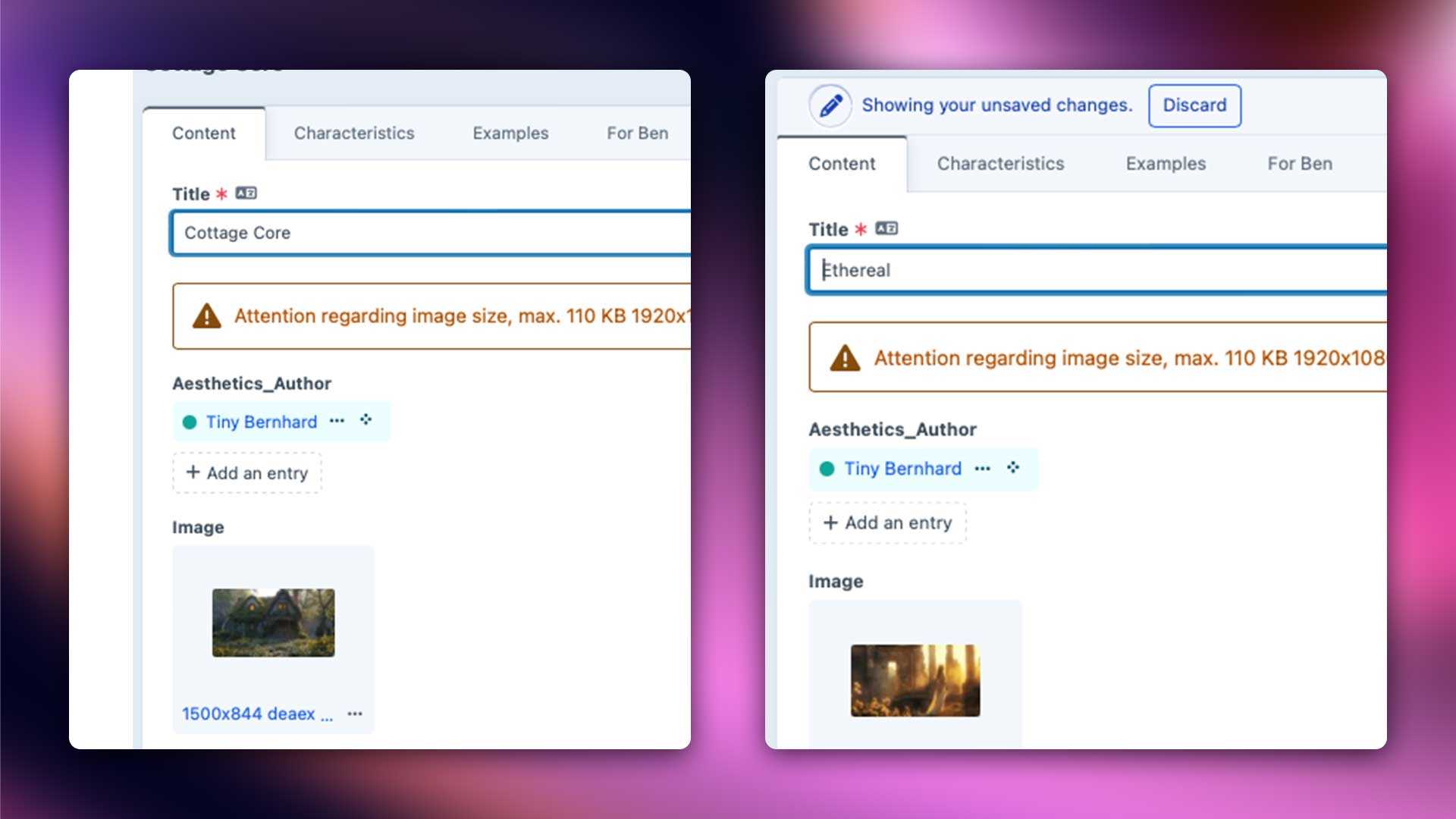
Navigating the Challenges of Color Schemes
The category of colors was a complex issue in my case. Simple categorization of colors like in an online store (red, purple, green, etc.) is possible, but proves to be ineffective for the topic of aesthetics. The reason lies in the diversity and different nuances of color tones, each of which can evoke various effects and moods. Instead of generic color names, I found it a better idea to highlight more specific color categories such as neon, pastel tones, or earthy tones. This way, companies can more quickly find an aesthetic that better reflects their brand identity and enables targeted emotional appeals.
For example, your company's corporate design is in pastel tones. Now, you can explore which aesthetics include pastel colors and incorporate them into your visual communication.
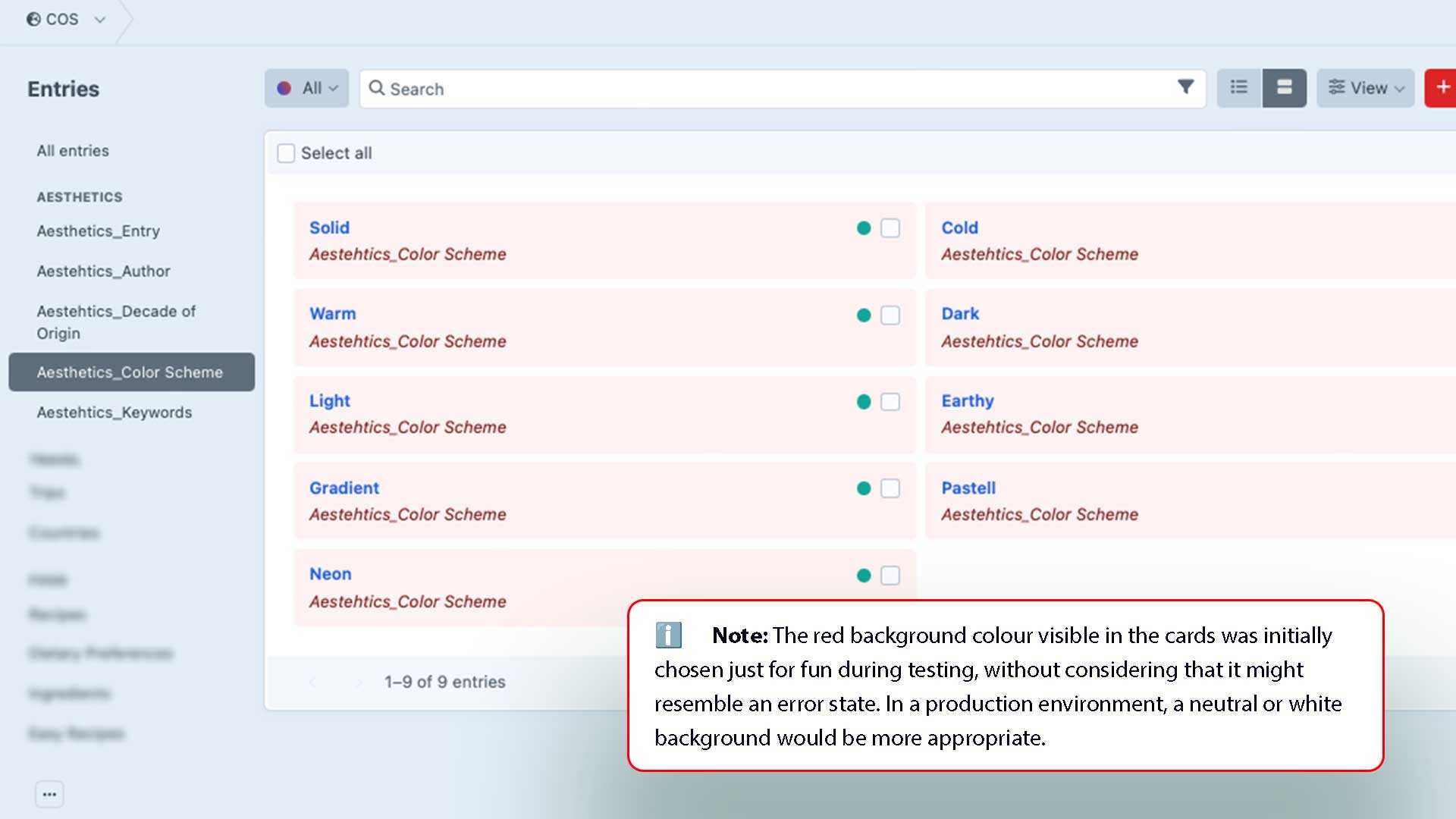
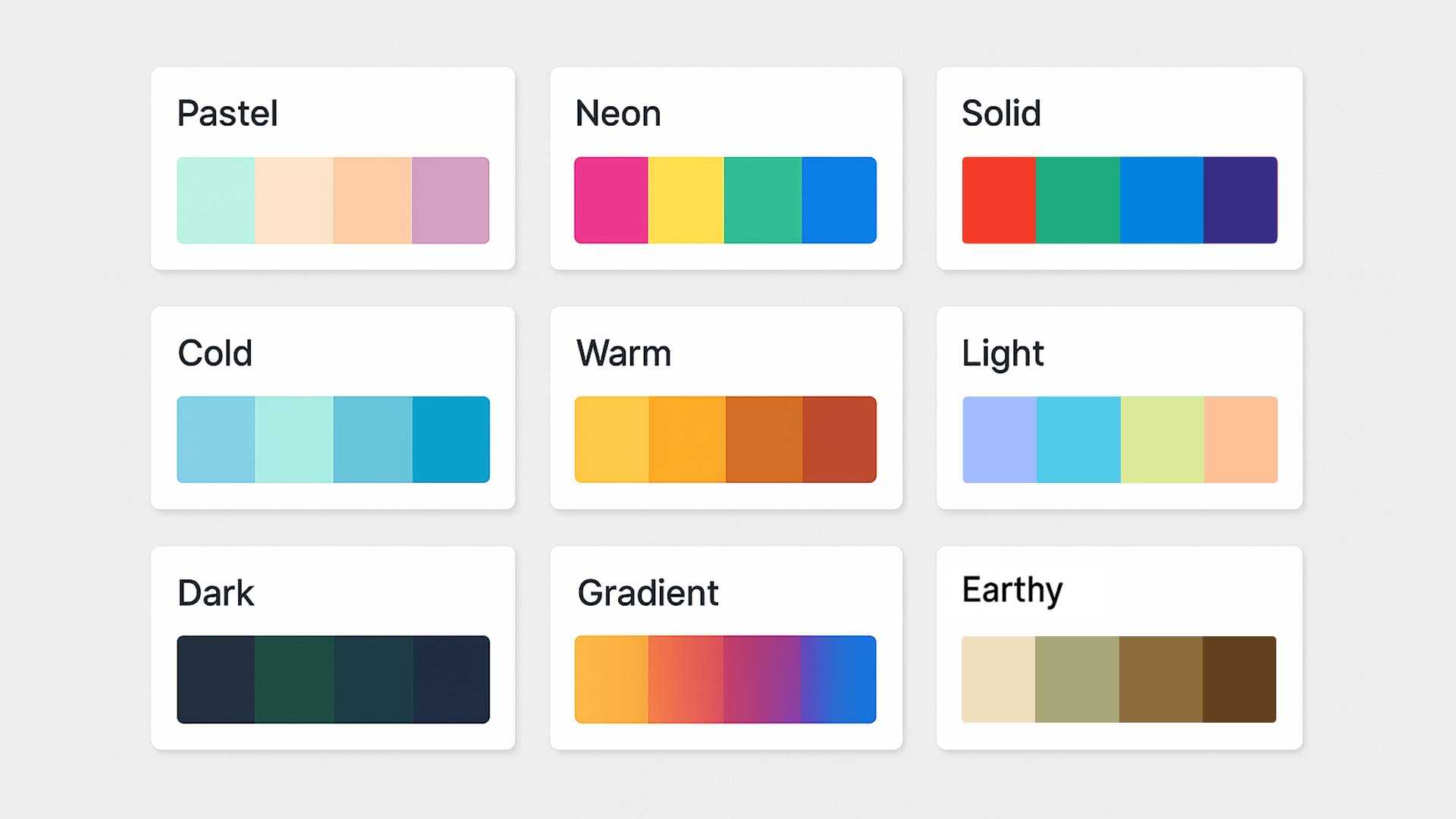
Navigating the Challenges of Translation Accuracy
In the case of aesthetics, it makes sense to design the content model exclusively in English. This serves clarity and optimization for search engines.
Of course, this decision may result in the exclusion of certain groups of people, as the content is not available in their native language. Here, the question of priorities arises: The main goal in this case is accuracy, not inclusivity. This decision underscores the importance of precise and unaltered information, even if it may limit the reach of the content model.
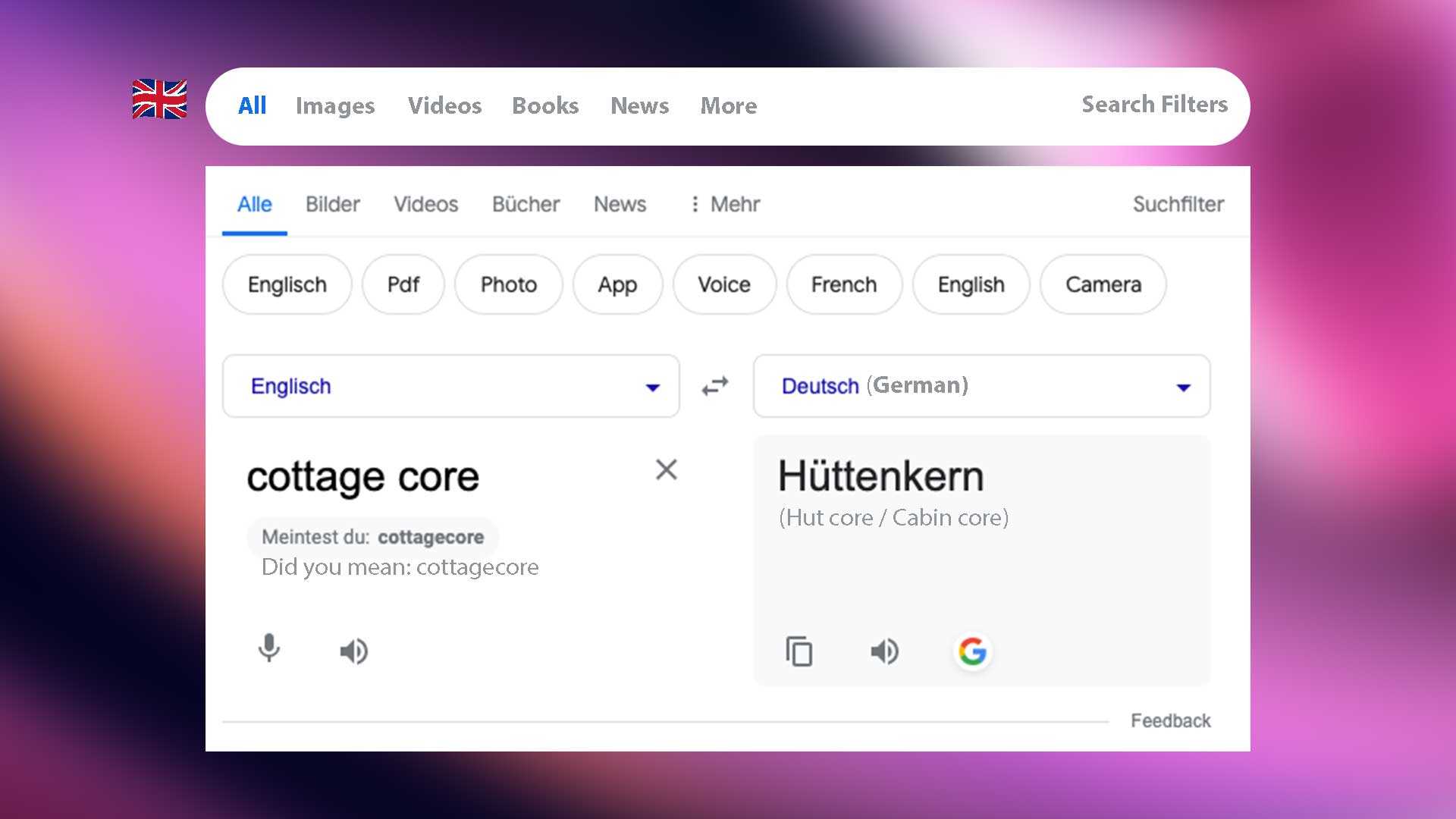
Navigating the Challenges of Flexibility
Not every aesthetic is equally detailed, especially when dealing with subgenres. Therefore, it is essential to develop a system that provides enough flexibility for authors to enter information without leaving many fields empty or making them mandatory.
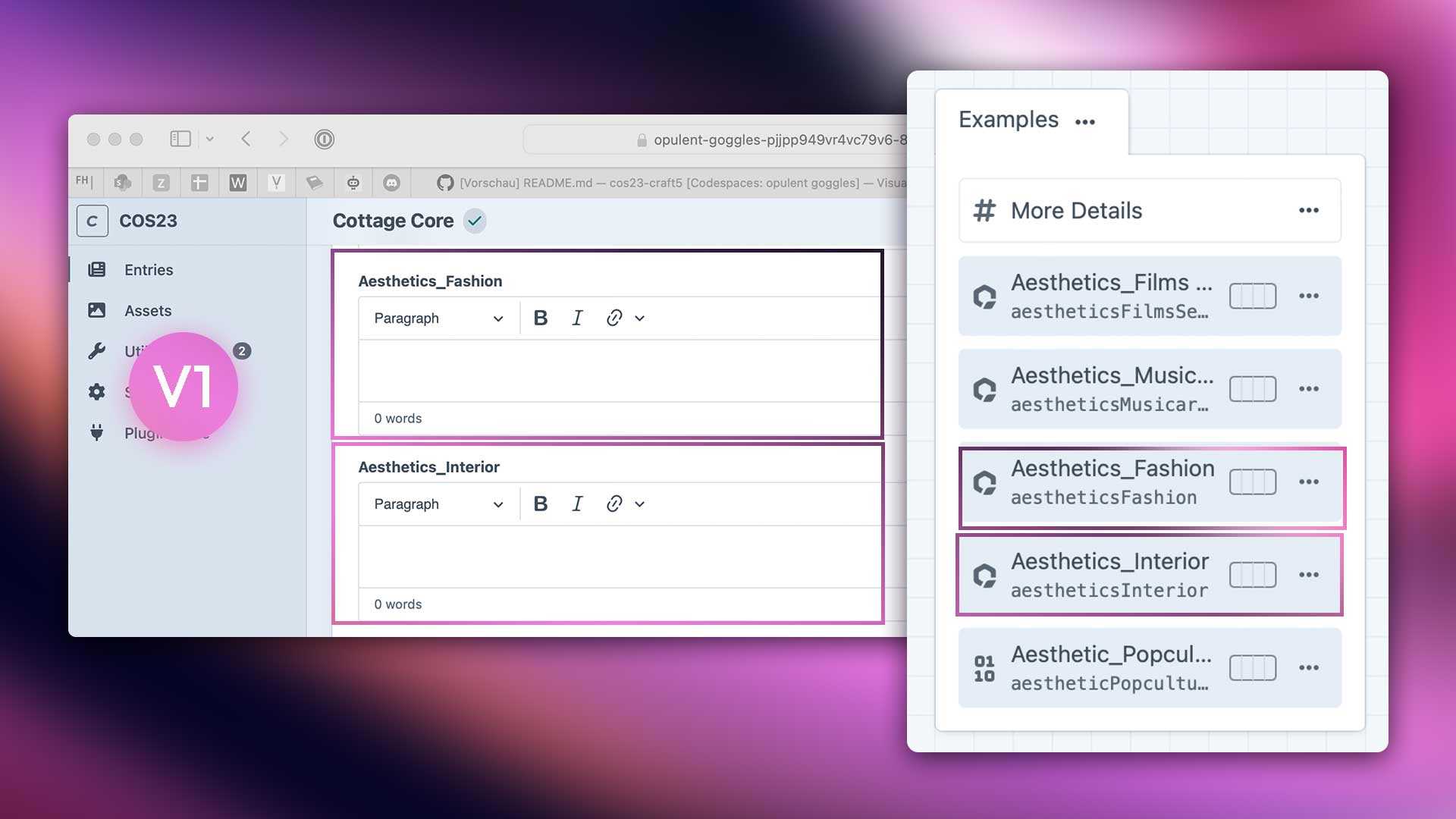
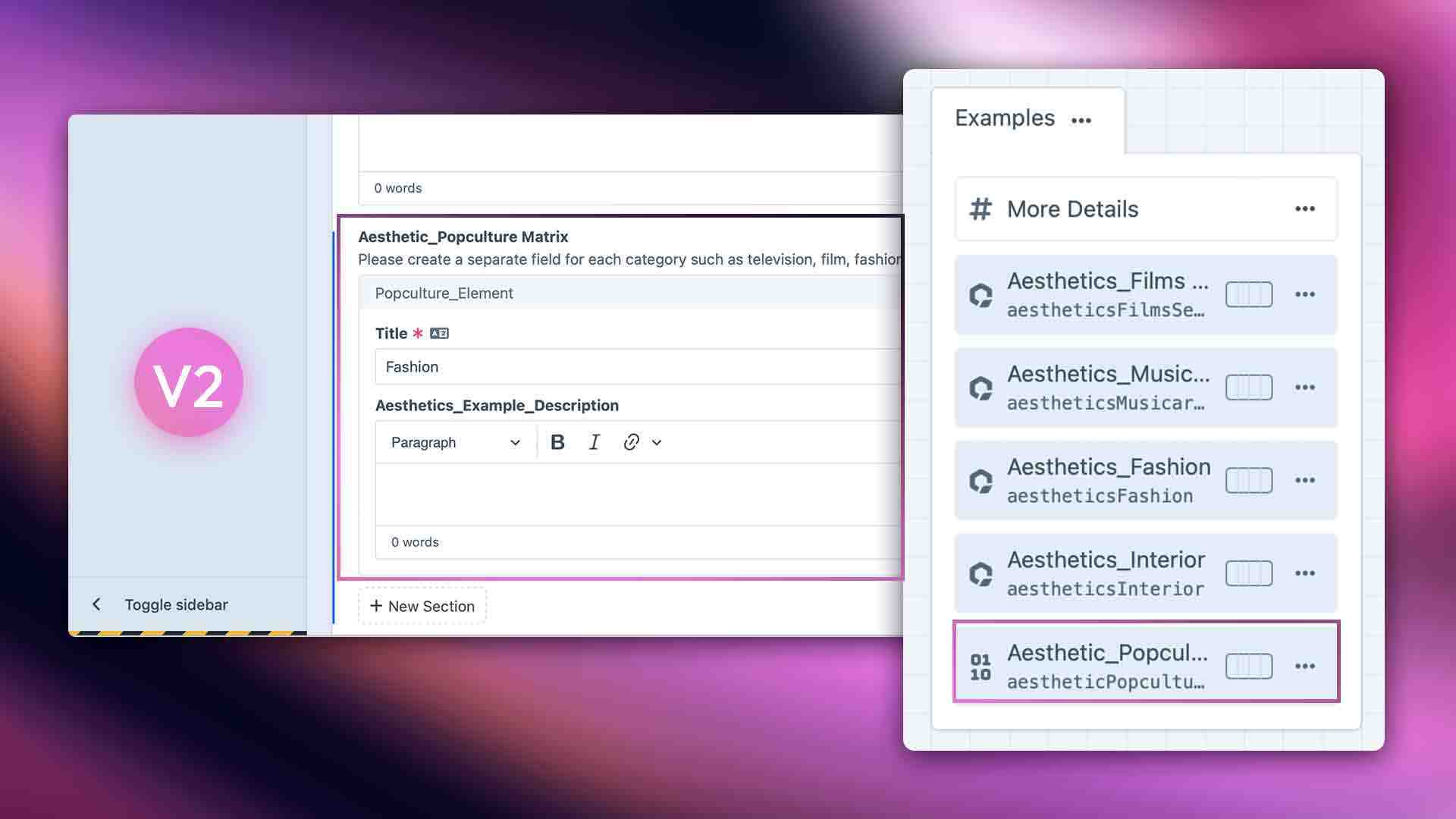
Conclusio #
In conclusion, the past year and the associated engagement with content strategy have significantly broadened my horizons. Integrating design and beauty with the technical aspects of a content management system has not only deepened my professional knowledge but also highlighted the importance of well-structured and thoughtful content strategies for user experience.
From my example with aesthetics, it is clear that a well-maintained and precise content model is essential, especially as a tool in visual brand communication. If you, like me, use aesthetic keywords for prompting, you still need to be cautious because mistakes are often made by taking words out of their context. This shows the necessity for humans to monitor and correct the generated results to ensure that the representations of aesthetics are accurate.
Furthermore, it opens up the exciting question of whether such a structured content model could function on a principle similar to the Google Knowledge Graph, but I would need to delve deeper into Schema.org to explore that possibility.
Where to go from here #
This article relates to other topics in the programme like metadata, structured content, and information architecture.
References #
Note: All references in this article are linked directly within the text
This article is based on a student project completed during the second semester of the Master's programme in Content Strategy at FH Joanneum. The project was part of the course “Introduction to Content Management” (2024) taught by Ben Croker.

